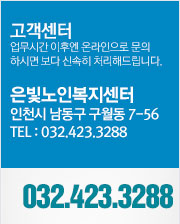How you can Learn Gold News
페이지 정보
작성자 Philomena Wagne… 작성일24-12-21 12:06 조회15회 댓글0건본문
 In the Soviet occupation zone of Germany (later the German Democratic Republic), the East German mark (additionally named "Deutsche Mark" from 1948 to 1964 and colloquially referred to as the Ostmark-actually Eastmark) was launched a couple of days afterwards in the form of Reichsmark and Rentenmark notes with adhesive stamps to cease the flooding in of Reichsmark and Rentenmark notes from the West. It was launched because the official currency of East Germany in July 1990, replacing the East German mark (Mark der DDR), in preparation for unification on three October 1990. East German marks were exchanged for Deutsche Marks at a fee of 1:1 for the primary M 4,000 and 2:1 for bigger quantities. In July 1948, a completely new series of East German mark banknotes was issued. The US occupation coverage was governed by the directive JCS 1067 (in impact until July 1947), which forbade the US military governor "to take any steps to strengthen German monetary construction". In addition, the Marshall plan pressured German corporations, in addition to these in all of Western Europe, to modernize their enterprise practices, and take account of the wider market. The currency reforms were simultaneous with the $1.4 billion in Marshall Plan cash coming in from the United States, which primarily was used for investment.
In the Soviet occupation zone of Germany (later the German Democratic Republic), the East German mark (additionally named "Deutsche Mark" from 1948 to 1964 and colloquially referred to as the Ostmark-actually Eastmark) was launched a couple of days afterwards in the form of Reichsmark and Rentenmark notes with adhesive stamps to cease the flooding in of Reichsmark and Rentenmark notes from the West. It was launched because the official currency of East Germany in July 1990, replacing the East German mark (Mark der DDR), in preparation for unification on three October 1990. East German marks were exchanged for Deutsche Marks at a fee of 1:1 for the primary M 4,000 and 2:1 for bigger quantities. In July 1948, a completely new series of East German mark banknotes was issued. The US occupation coverage was governed by the directive JCS 1067 (in impact until July 1947), which forbade the US military governor "to take any steps to strengthen German monetary construction". In addition, the Marshall plan pressured German corporations, in addition to these in all of Western Europe, to modernize their enterprise practices, and take account of the wider market. The currency reforms were simultaneous with the $1.4 billion in Marshall Plan cash coming in from the United States, which primarily was used for investment.

This penchant for accuracy continues with the euro (whereas Finland or the Netherlands for example, value to the closest 5 cents) with the 1-cent coin nonetheless encountered in Germany. Initially the worth of gold soared to levels of US$500/oz., but gold was allowed to trickle out of Fort Knox and the panic subsided and the worth fell back and gold now floats like every other commodity. Philippines-centered mineral assets agency Metals Exploration PLC on Monday confirmed a GBP67.5 million bid for fellow London itemizing Condor gold price today PLC. Germany hosts a very giant and necessary gold market, nonetheless there isn't a centralised physical gold change in the nation, and although some price gold futures buying and selling products exist, these are minimal. The result was the prices of German export merchandise held steady, whereas profits and earnings from exports soared and have been poured back into the economic system. In 1950, cupronickel DM1 coins had been launched, while a cupronickel DM2 and a .625 silver DM5 had been released in 1951. Cupronickel replaced silver within the DM5 in 1975. The DM2 and DM5 coins have often been used for commemorative themes, although typically solely the generic design for the DM5 is intended for circulation.
There have been a considerable number of commemorative silver DM 5 and DM 10 coins, which truly had the standing of legal tender but were rarely seen exterior of collectors' circles. Unlike other countries (comparable to Australia) there was no attempt or proposal recommended for the withdrawal of the 1pf and 2pf coins. The weights and dimensions of the coins could be found in an FAQ of the Bundesbank. Both coins had been nonetheless in circulation in 2001 and supermarkets particularly nonetheless marked prices to the nearest pfennig. Since the 1930s, costs and wages had been managed, but cash had been plentiful. Although it would be nice to invest money in Germany with out danger, that is unfortunately not doable. During the primary two years of occupation the occupying powers of France, United Kingdom, United States, أسعار الذهب في كندا and the Soviet Union were not capable of successfully negotiate a doable forex reform in Germany.
If you have any concerns concerning where and how to use أسعار الذهب في كندا, you can contact us at our page.
댓글목록
등록된 댓글이 없습니다.







